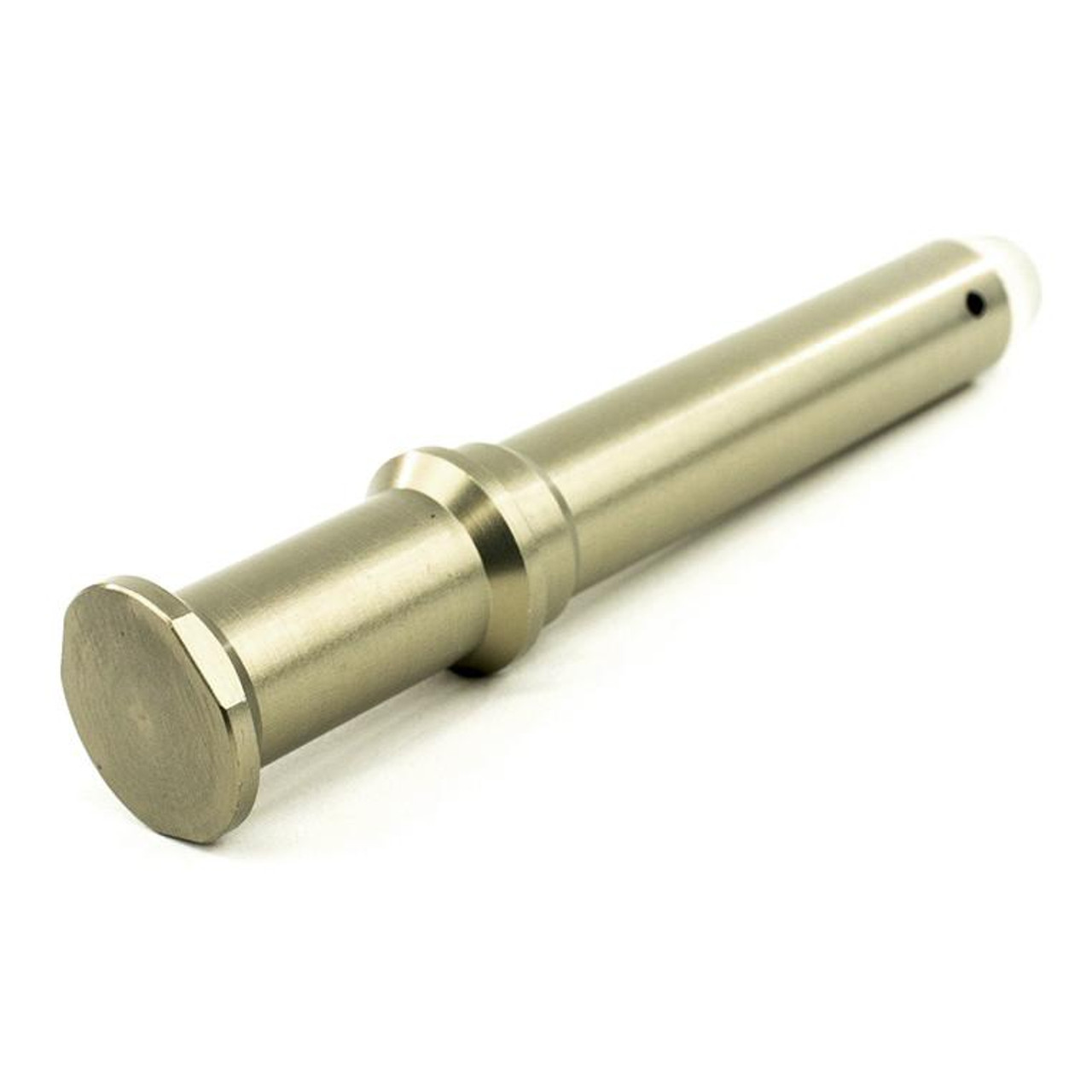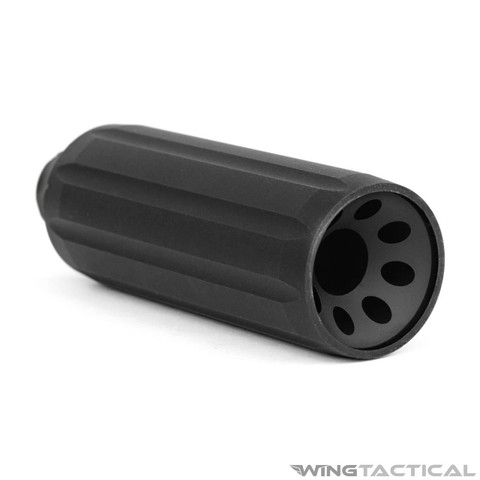The buffer might not be the most exciting part of your AR-15, but it’s one of the most important. Think of it as the unsung hero that keeps your rifle running smoothly—absorbing recoil, guiding the bolt back and forth, and making sure every round feeds reliably. Whether you’re building a new rifle or tweaking your setup for better performance, the right AR-15 buffer can make a noticeable difference in how your gun feels and functions.
What Is a Buffer, and Why Does It Matter?
The buffer resides in the buffer tube and works alongside the buffer spring as part of your rifle’s recoil system. When you fire a round, the buffer slows the bolt carrier group’s rearward movement, absorbing recoil and ensuring smooth cycling.
The right AR buffer system prevents over-gassing, reduces wear on internal components, and optimizes reliability. Upgrading your buffer can also solve cycling issues in non-standard or suppressed setups.
Types of Buffers
Different configurations require different buffers. Here’s a breakdown of the main types:

Standard Carbine Buffers
Standard carbine buffers are designed for AR-15 builds with a carbine-length gas system, which is one of the most common configurations. These buffers typically weigh 3 ounces and provide a balance of reliability and performance for general or tactical use. Standard carbine buffers are well-suited for recreational shooting, home defense, and lightweight rifle setups. While effective in most builds, they may struggle to handle over-gassed systems or heavier recoil.

Heavy Buffers (H1, H2, H3)
Heavy buffers are designed to address over-gassed systems or rifles equipped with suppressors, which can increase bolt carrier speed. They come in different weights:
- H1 Buffer: Typically weighs around 3.8 ounces and is used in mildly over-gassed rifles to reduce cycling speed.
- H2 Buffer: Weighing about 4.6 ounces, it is more effective in controlling bolt speed in suppressed or over-gassed setups.
- H3 Buffer: The heaviest, at approximately 5.4 ounces, ideal for heavily suppressed rifles or rifles chambered in high-pressure rounds.
These buffers slow down the cycling speed of the bolt carrier group (BCG), reducing felt recoil, minimizing wear on components, and enhancing overall reliability. Heavy buffers are particularly useful for suppressor users or those experiencing cycling issues in over-gassed systems.

Rifle-Length Buffers
Rifle-length buffers, also known as A2 buffers are used in AR-15 and AR-10 rifles with rifle-length buffer tubes. They are longer and heavier than carbine buffers, typically weighing around 5 ounces. These buffers are designed to complement the smooth gas flow of rifle-length systems, ensuring consistent and reliable performance with minimal recoil. These buffers are not interchangeable with carbine buffer systems due to differences in length and spring requirements.

Adjustable Buffers
Adjustable buffers allow shooters to fine-tune the buffer weight by adding or removing internal weights (typically tungsten, steel, or aluminum). This customization is particularly valuable for:
- Precision shooters seeking to minimize recoil for faster follow-up shots.
- Rifles with unique configurations, such as non-standard gas systems or custom calibers.
- Competition shooters who want the smoothest cycling and optimal performance for specific loads.
Adjustable buffers provide unparalleled flexibility, making them a popular choice for highly tuned setups or rifles used in variable environments.

PCC Buffers (Pistol Caliber Carbine Buffers)
PCC buffers are specially designed for AR-style rifles chambered in pistol calibers like 9mm, .45 ACP, or 10mm. These calibers create different cycling dynamics compared to traditional rifle calibers, necessitating a tailored buffer system.
Key characteristics of PCC buffers include:
- Heavier weight (often 6-10 ounces) to handle the increased energy of blowback-operated systems.
- Shortened design to accommodate the specific needs of pistol-caliber ARs.
PCC buffers ensure reliable cycling, reduce bolt slap, and help manage recoil in blowback-operated systems, improving performance and component longevity.
Why Upgrade Your Buffer?
Investing in a premium buffer can transform your rifle’s performance. Key benefits include:
- Improved Cycling: Properly weighted buffers ensure consistent feeding and ejection, minimizing malfunctions.
- Reduced Felt Recoil: Heavier buffers absorb more energy, making follow-up shots faster and improving overall control.
- Increased Reliability: High-quality buffers can address issues like over-gassing, short-stroking, or unreliable cycling in suppressed or short-barreled rifles.
- Durability: Premium materials and advanced coatings reduce wear and extend the buffer’s lifespan, even under heavy use.
Why Choose Wing Tactical for Buffers?
Wing Tactical takes the guesswork out of finding the best buffer for your rifle. We carry a carefully curated selection of buffers from industry-leading brands like Spike's Tactical, Odin Works, and Armaspec. Each product is vetted for quality, ensuring you get reliable, high-performance components.
Whether you’re building a rifle for duty, fine-tuning a competition setup, or optimizing a recreational build, Wing Tactical is your trusted source for AR-15 and AR-10 buffers.
Elevate your shooting experience with a buffer tailored to your rifle’s needs—shop Wing Tactical today!
Frequently Asked Questions
What does a buffer do in an AR rifle?
A buffer slows and controls the bolt carrier group’s rearward movement, absorbing recoil and ensuring consistent cycling of the firearm.
How do I choose the right buffer weight?
Consider factors like your rifle’s gas system length, barrel length, and ammunition type. Over-gassed systems or suppressors often benefit from heavier buffers.
What is the difference between a standard buffer and a heavy buffer?
Standard buffers are lighter and suitable for most tactical setups. Heavy buffers (H1, H2, H3) reduce bolt carrier speed, improve recoil management, and enhance reliability in specific configurations.
Can a buffer affect recoil?
Yes, a heavier buffer absorbs more energy, reducing felt recoil and improving shooting comfort, especially during rapid-fire.
Are buffers universal across AR platforms?
No, buffers are specific to the platform (AR-15 or AR-10) and the type of buffer tube (carbine or rifle). Ensure compatibility before purchasing.
How often should I replace my buffer?
Buffers are durable but should be inspected periodically for wear or damage. Replace them if you notice deformation or excessive wear on the buffer face.
Do suppressors affect buffer selection?
Yes, suppressed rifles often require heavier buffers to handle increased back pressure and prevent over-gassing issues.






